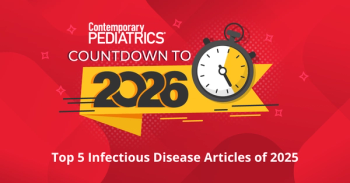
AHRQ report reveals scarcity of research
AHRQ finds knowledge, research are lacking when attempting to find what works or does not work for helping children exposed to trauma.
When children are exposed to trauma, our knowledge of what helps and what does not is very limited, according to a comparative effectiveness review prepared for the Agency for Healthcare Research and Quality (AHRQ).
The report, from the RTI International-University of North Carolina at Chapel Hill Evidence-based Practice Center, looked only at interventions for children exposed to trauma other than maltreatment or family violence and concluded, “Our findings may be interpreted as a call to action: Psychotherapeutic intervention may be beneficial relative to no treatment, but far more research is required to produce definitive guidance on the comparative effectiveness of psychotherapeutic or pharmacological interventions targeting children exposed to trauma, some of whom already have symptoms.”
In addition, a companion review due out this spring looks at treatment of maltreated children and has found similar limitations “in volume and type of evidence.”
“Both reviews conclude that strong recommendations cannot be made based on the findings,” the authors said.
In a commentary on the current report in Pediatrics, Denise Dowd, MD, MPH, calls this evidence “indeed paltry,” pointing out that it comes in the face of exponential growth in understanding of the impact of childhood trauma exposure on physical and mental health.
The AHRQ-sponsored study notes that although nearly two-thirds of children and adolescents go through at least 1 traumatic event and most do not suffer a long-term impact, some do develop traumatic stress syndromes, including posttraumatic stress disorder (PTSD).
After looking at a total of 6,647 articles from standard databases and sources, the authors excluded all but 506 after reviewing the abstracts. They then excluded most of the others for reasons such as a high risk of bias or wrong population or publication type. They finally included 22 studies in the review.
One reason for the exclusion of many studies, the authors noted, was that they did not look at children whose source of trauma was not maltreatment or family violence. Even among those 22 studies, there was such a variety of components, including medication dose and frequency, family member involvement, and mode and method of delivery, that it challenged “attempts to combine or categorize interventions,” they said. In addition, each of the studies looked at a unique intervention, so there was no replication of findings.
“No pharmacotherapy intervention demonstrated effectiveness,” the authors said.
Some school-based treatments that included elements of cognitive behavior therapy (CBT) appear promising in terms of “the magnitude and precision of effects found.” However, there was less compelling evidence for interventions for children who already had symptoms, even though those interventions did have elements of CBT.
With most studies looking at short-term outcomes, there was no insight on interventions’ impact on long-term development, the report indicates. Also, there was little evidence on how effectiveness might vary by child characteristics, and none on treatment characteristics or setting.
In addition, the authors said, “We also found almost no evidence on harms associated with psychological treatments. Only pharmacological interventions attempted to assess harms in this vulnerable population.”
The authors suggest that given this preliminary evidence, clinicians and policymakers may want to focus on therapies that have some evidence of effectiveness, and clinicians may want to “create patient-centered treatments composed of specific components of several interventions that have particular theoretical, evidence-based, or anecdotal benefits.”
Dowd, the commentary writer who is professor and injury researcher at the University of Missouri-Kansas City, said that professionals, including social workers, psychologists, physicians, and educators, identify and intervene when children are exposed to trauma but added, “They fail to take advantage of the depth and breadth of each other’s knowledge and insight.”
The report, “Child and Adolescent Exposure to Trauma: Comparative Effectiveness of Interventions, Addressing Trauma Other Than Maltreatment or Family Violence,” is available on the AHRQ Web site, www.effectivehealthcare.ahrq.gov.
Newsletter
Access practical, evidence-based guidance to support better care for our youngest patients. Join our email list for the latest clinical updates.




